Are you interested in kimono but wondering “What makes them so appealing?” or “What exactly is the beauty of kimono?” This article explores five fascinating aspects of kimono that enthusiasts actually experience, explained in detail for beginners.
The world of kimono is profound, and once you discover its charm, you’ll be captivated by its beauty. Let’s explore the wonderful aspects of Japanese traditional culture through the appealing elements of kimono.
5 Key Points to Understanding Kimono’s Appeal
1.Kimono Patterns (Monyo) and Their Deep Meanings
One of the most attractive elements of kimono is the beautiful patterns called “monyo.” These unique and meaningful designs are unlike anything found on Western clothing.
The Appeal of Densely Packed Gorgeous Patterns
The intricate patterns drawn across a single kimono possess an overwhelming beauty. These patterns are not mere decorations—each one carries deep meaning.
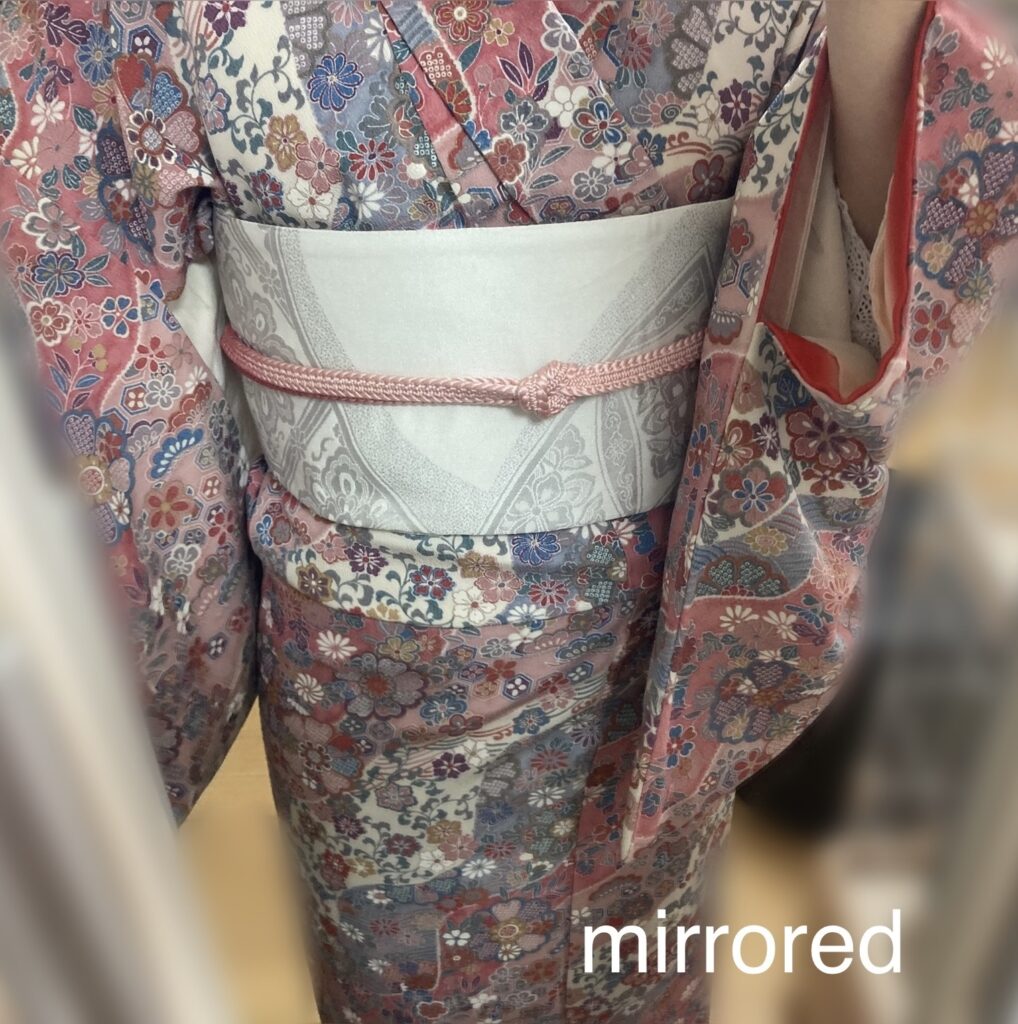
Delicate Beauty Revealed by Light
Some patterns appear only when light hits them at the right angle, thanks to the weaving texture. This subtle and elegant beauty is truly unique to kimono.
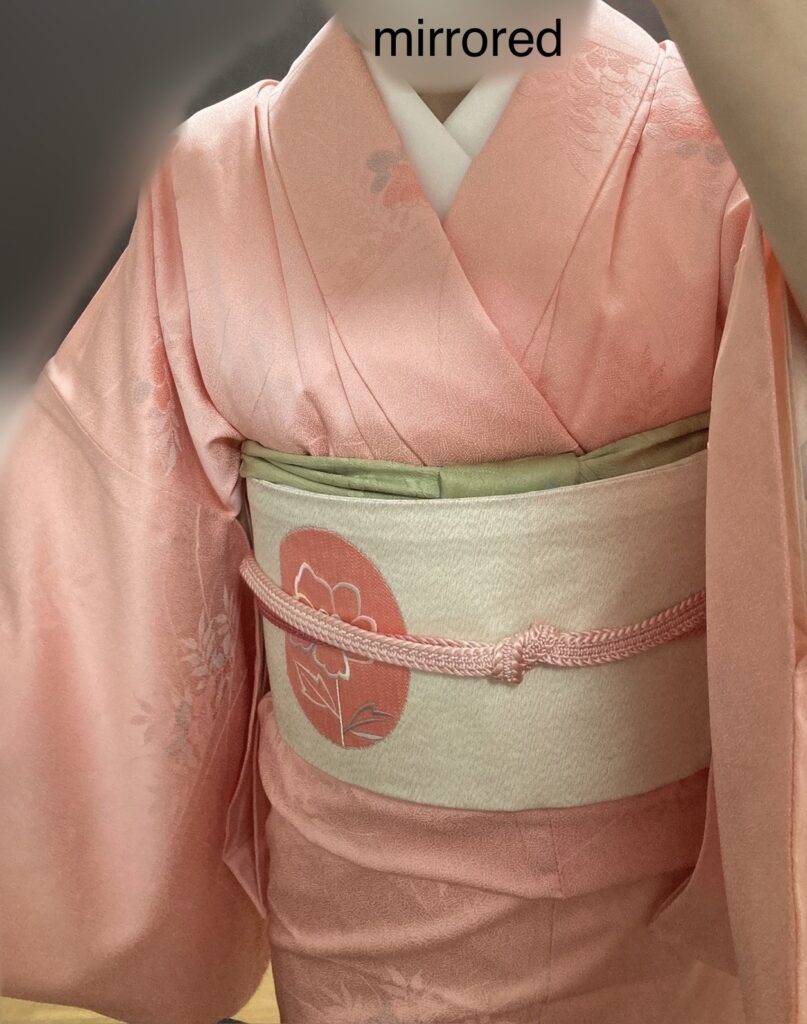
Major Patterns and Their Meanings
Oshidori (Mandarin Duck) Pattern
For example, this is an oshidori (mandarin duck) pattern, symbolizing marital harmony, which is often seen at weddings.
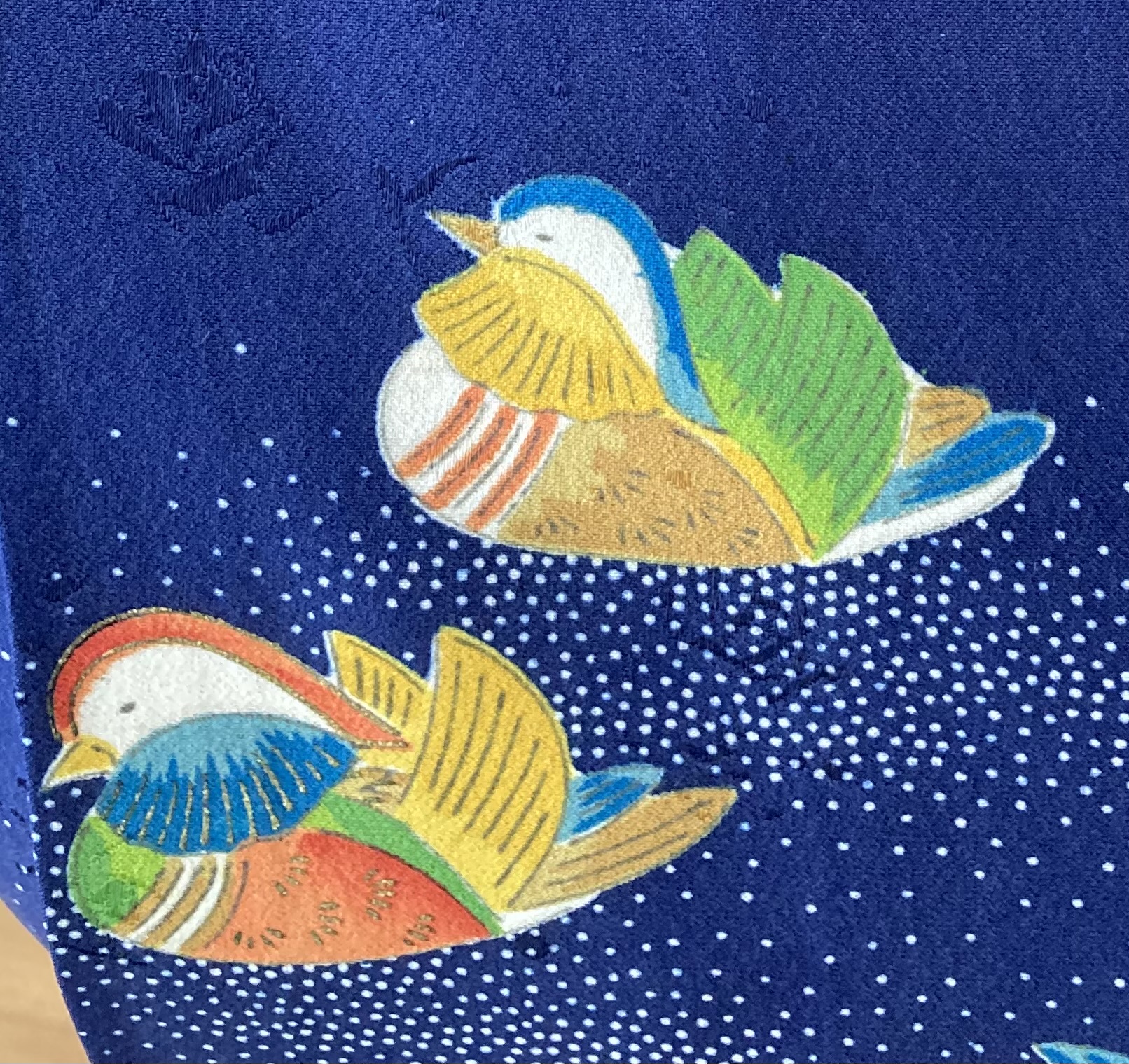
Noshi
This is the noshi pattern, inspired by the noshi used for celebratory gifts, commonly found on kimono worn during happy occasions.
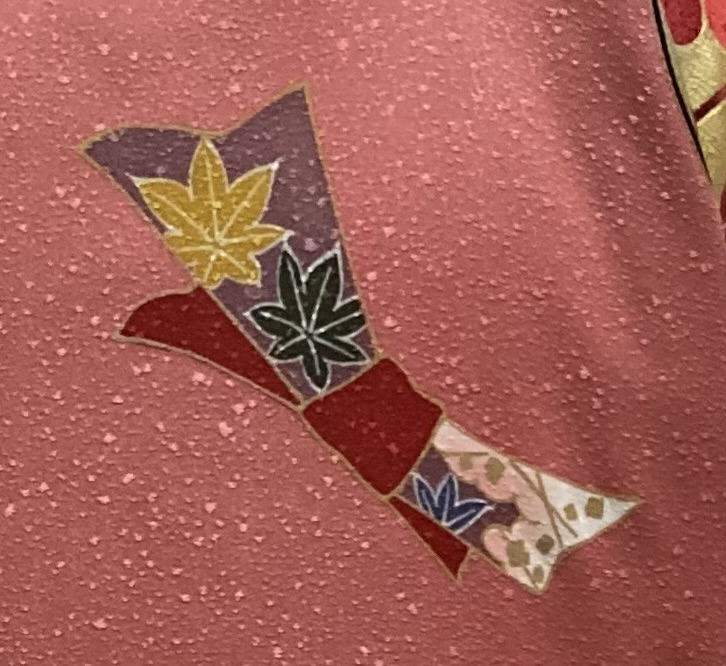
Temari
Then, there’s the temari pattern. Temari were traditional Japanese handballs, a toy for girls, and they are said to symbolize femininity. It’s also believed that the round shape represents wishes for a life of happiness and growth. This picture shows temari depicted on a furisode kimono worn at a coming-of-age ceremony. I imagine this pattern reflects a parent’s wishes for their child’s bright future.

There are books published on Japanese patterns, although they are in Japanese.
Understanding these patterns multiplies the joy of viewing kimono. Contemplating the meanings while admiring kimono brings special pleasure.
2.Kimono Colors: Beautiful Gradations Created by Artisan Skills
The more you look at kimono, the more you notice how even similar shades of blue, for instance, can differ subtly in nuance. I once read that a certain dyer would repeatedly check the fabric until the color turned out exactly as they envisioned.
It’s thanks to these artisans, who painstakingly craft these colors, that we have such a variety of beautiful kimono hues.
Kimono colors are often chosen to reflect the seasons.
In spring, you might select soft, gentle colors, while in winter, you might go for deeper, richer shades.
Since Japan has four distinct seasons, coordinating kimono according to the time of year is another fun aspect.
3.The Joy of Coordination: Infinite Combination Possibilities
Kimono coordination doesn’t end with just the kimono and obi (belt). There are also accessories like the haneri (collar), obiage (sash), and obijime (cord).
While optional, there are also decorative items like the obidome (obi ornament).
Though these accessories may seem minor, they can significantly impact the overall impression. Even the same kimono and obi can look entirely different depending on how they’re combined, making coordination possibilities nearly endless.
Kimono Coordination Comparisons
Here’s a photo showing how the same kimono looks with a different obi.
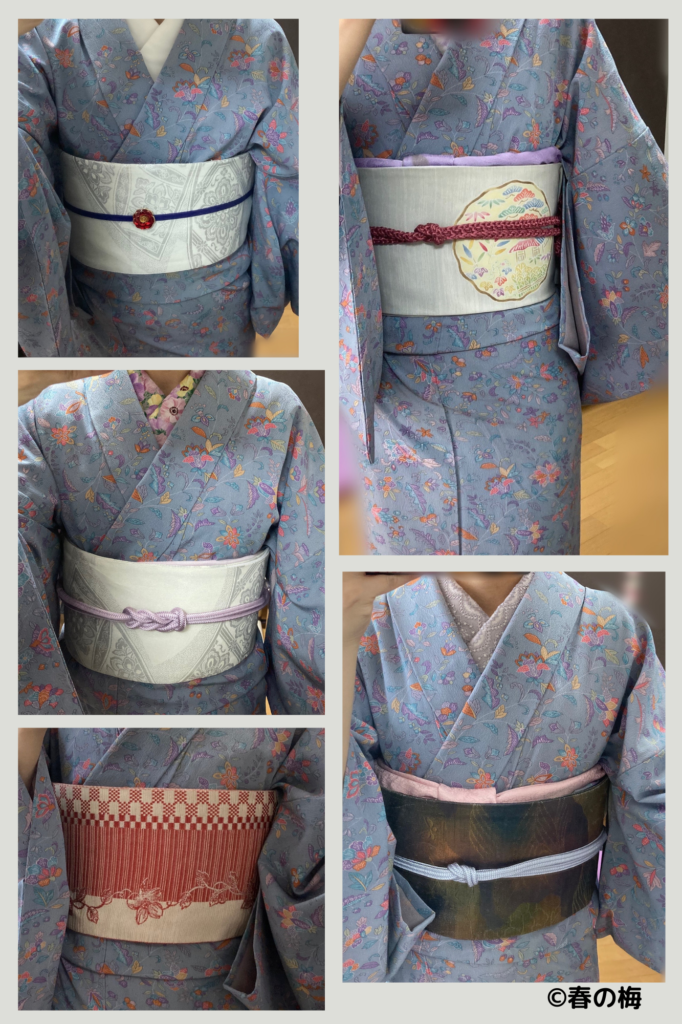
On the left, the top and middle show the same obi used in different ways.
Don’t they look slightly different?
And here, I’ve changed both the obi and accessories, giving the kimono a new feel.
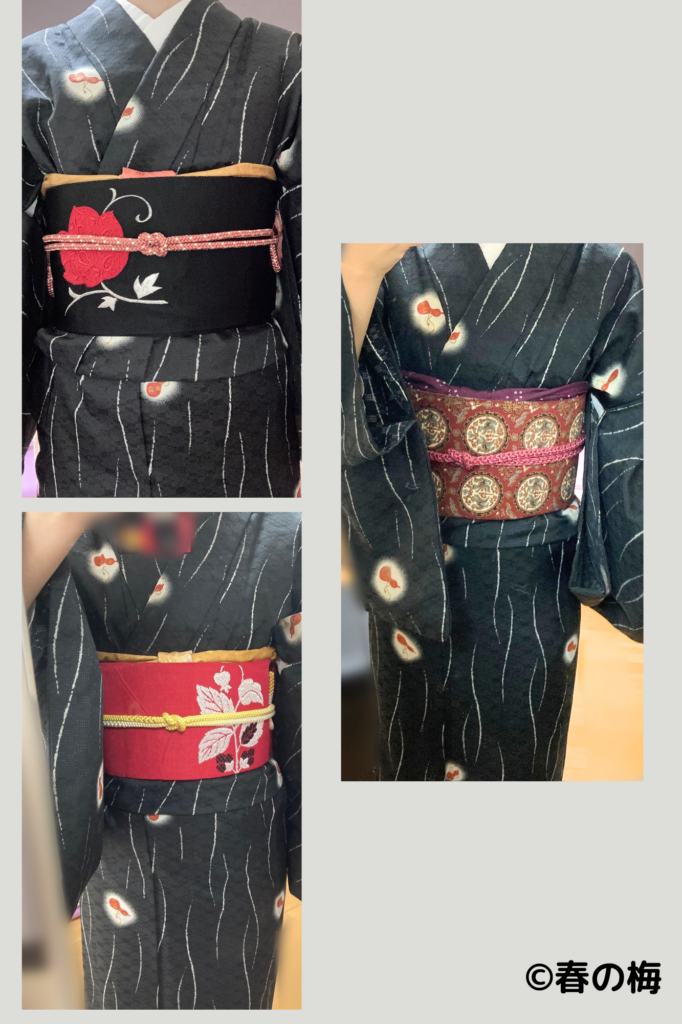
I’m not particularly confident in my coordination skills, but I’d be happy if you could notice the change in impression.
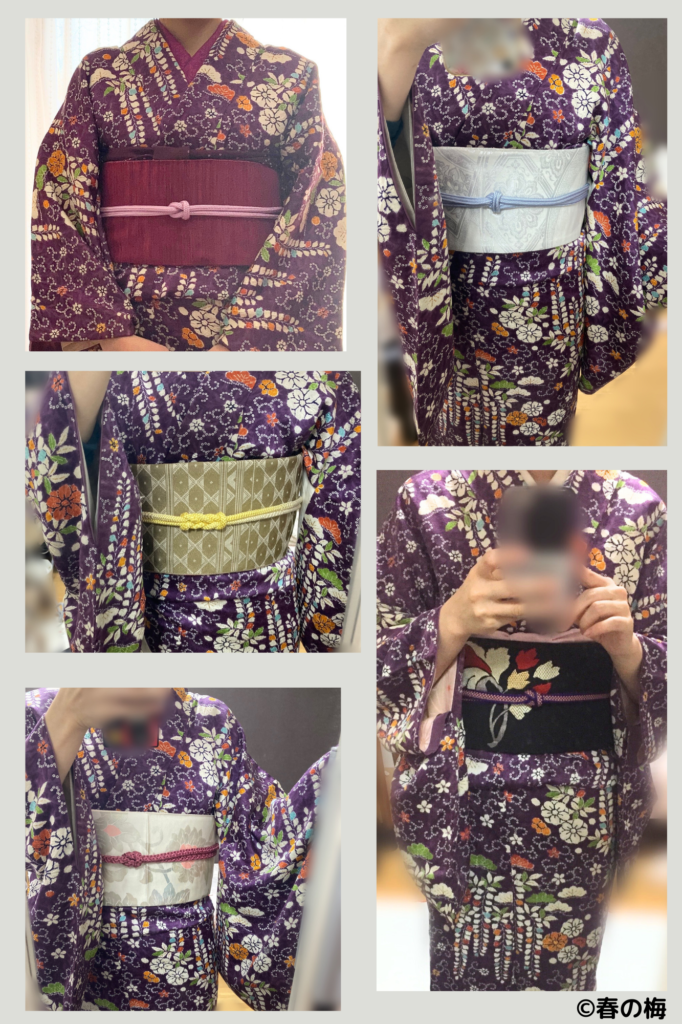
When I first got into kimono, I was so captivated by the variety that I bought many without much thought. But now, I’ve slowed down and focus more on how to create variations with the kimono I already own.
The Excellence of Traditional Craftsmanship
Many kimono are made using traditional Japanese techniques.
Kyo-Yuzen
For example, there’s Kyo-yuzen, a dyeing method said to have started with an artist during the Edo period. The designs are drawn with a resist paste to prevent the colors from blending. This kimono, though secondhand, was identified as a Kyo-yuzen piece when I bought it, and it has a bright, elegant feel.
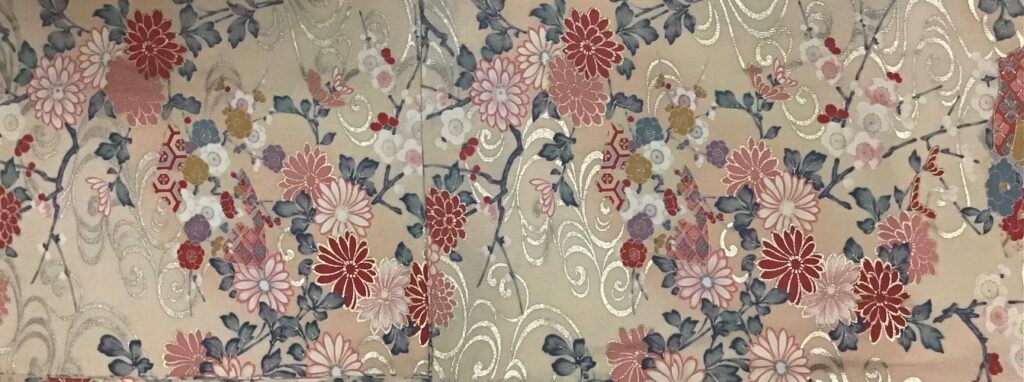
Ryukyu bingata
In Okinawa, there’s Ryukyu bingata, a dyeing technique that uses a paste made from soybeans to prevent colors from bleeding, followed by the application of dye through stencils. The process also involves shading to create a sense of depth in the pattern.
I think Okinawa’s unique climate influences the vivid colors and bold patterns you often see in its textiles.
Yuki-Tsumugi
Aside from dyeing, there are also traditional weaving techniques, such as Yuki-tsumugi, one of the most famous. This type of silk fabric is made using hand-spun threads pulled from mawata (silk floss) and handwoven using traditional methods.
Yuki-tsumugi has been designated as an Important Intangible Cultural Property by the Japanese government. Due to the labor-intensive process, it’s quite expensive.
Japan has countless other techniques in both dyeing and weaving that I couldn’t possibly cover here. It’s amazing to think how our ancestors refined and passed down these skills over time. I hope to one day see these techniques in person as I travel around Japan.
5.The Power to Make People Happy: Special Joy Brought by Kimono
Happiness for the Wearer
When I wear kimono, I sometimes feel a special sense of joy. It’s a feeling many women might recognize—that sense of excitement when you wear your favorite outfit and feel like today’s going to be a great day. Even now, I still get excited whenever I wear kimono after a long time.
Happiness For Others
Interestingly, it’s not just me who feels good when I wear kimono. I’ve received compliments just walking around, with people telling me things like, “You look so cool and refreshing,” or “You wear it beautifully, even though you’re so young.”
One time, a much younger girl approached me and said, “Your kimono is beautiful.” She blushed and hurried off, probably having worked up the courage to speak to me. It made me realize how kimono has a kind of magic that brings joy not only to the wearer but also to those around them.
When I first started getting into kimono, no one was happier than my mother. Since I couldn’t shop during the week, she went to various kimono shops to buy accessories for me, and she even got advice from the staff.
Happiness For Everyone
It’s truly wonderful to know that just by wearing something you love, you can make others happy, too. It’s like killing two birds with one stone!
These are the five aspects of kimono that I find so charming. I’m not sure if I’ve conveyed everything as well as I’d like, but for me, kimono is something that’s both beautiful to look at and soothing for the soul. Sometimes, I find myself marveling at how certain pieces seem like works of art. I hope that more people come to appreciate the beauty of kimono.

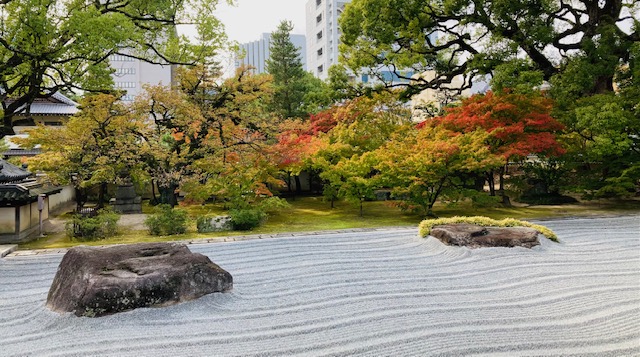

コメント